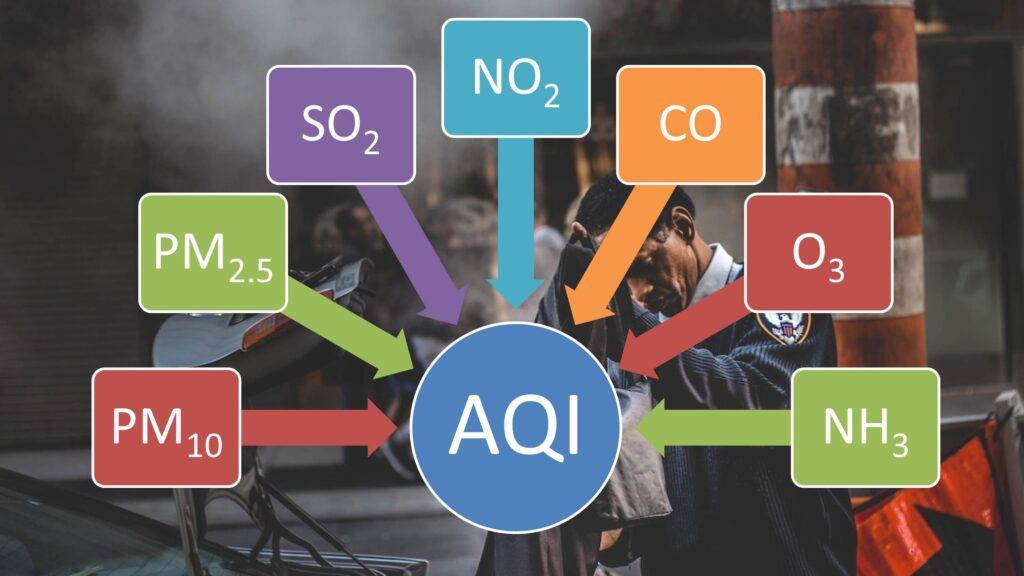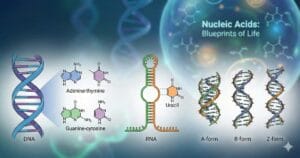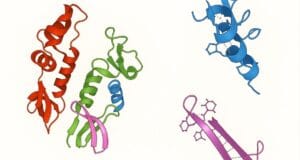
COMPETITIVE EXAM MCQs SERIES of ENVIRONMENTAL SCIENCE for UGC-NET/JRF, SLET, ARS, GATE, and other entrance tests – Environmental Pollution and Control: – Sampling and Monitoring of Air Pollutants.
Syllabus Outline
- Air sampling techniques, monitoring instruments, and equipment.
- Methods for measuring criteria pollutants and hazardous air pollutants.
- Air quality data analysis and interpretation
- Air quality assurance and quality control procedures.
- Regulatory framework and policies governing air quality management.
This quiz contains the concept-based most frequently asked 25 MCQs of “Environmental Pollution and Control – Sampling and Monitoring of Air Pollutants“. Each question has a single correct/most appropriate answer.
*****
1. What is the primary purpose of passive sampling techniques?
a) To measure pollutant concentrations continuously
b) To collect air samples at specific locations over a set period
c) To determine the sources of air pollution
d) To assess the health impacts of air pollutants
2. Which air pollutant is typically measured using a high-volume sampler?
a) Ozone
b) Nitrogen dioxide
c) Particulate matter
d) Carbon monoxide
3. Which of the following sampling methods is commonly used for VOC measurement?
a) Canister sampling
b) Impinger sampling
c) Filter sampling
d) Gravimetric sampling
4. The concept of active sampling in air pollution monitoring involves:
a) Collecting air samples without any external assistance
b) Using mechanical pumps to draw air through sampling devices
c) Passive diffusion of pollutants into sampling media
d) Monitoring air quality remotely using sensors
5. The technique of thermal desorption is used in air quality monitoring to:
a) Measure the temperature fluctuations in the atmosphere
b) Remove moisture from air samples before analysis
c) Release adsorbed compounds from sampling media for analysis
d) Determine the thermal conductivity of air pollutants
6. Which pollutant is commonly measured using a flame ionization detector in air quality monitoring?
a) Ozone
b) Nitrogen dioxide
c) Volatile organic compounds
d) Particulate matter
7. The technique of denuder sampling is primarily used for the measurement of:
a) Gaseous pollutants
b) Particulate matter
c) Semi-volatile organic compounds
d) Heavy metals
8. The Teflon filter is commonly used in air quality monitoring for its:
a) High adsorption capacity
b) Resistance to chemical degradation
c) Ability to capture fine particulate matter
d) Low cost
9. The National Ambient Air Quality Standards specify permissible levels of:
a) Emission rates from industrial sources
b) Air pollutant concentrations in the ambient air
c) Indoor air quality parameters
d) Noise pollution levels
10. Which of the following sampling methods is suitable for collecting air samples for heavy metal analysis?
a) High-volume sampling
b) Canister sampling
c) Filter sampling
d) Impinger sampling
11. The technique of inductively coupled plasma mass spectrometry is commonly used for the analysis of:
a) Volatile organic compounds
b) Nitrogen oxides
c) Heavy metals
d) Sulfur dioxide
12. The automated gas chromatograph is used in air quality monitoring for its:
a) High-sensitivity
b) Ability to measure particulate matter
c) Portability
d) Real-time monitoring capabilities
13. Which pollutant is commonly measured using a chemiluminescence detector in air quality monitoring?
a) Ozone
b) Nitrogen dioxide
c) Carbon monoxide
d) Sulfur dioxide
14. The technique of dynamic dilution is used in air quality monitoring to:
a) Increase the sensitivity of sampling instruments
b) Reduce interference from background contaminants
c) Extend the range of pollutant concentrations that can be measured
d) Control the flow rate of sampling air
15. Which of the following sampling methods is suitable for collecting air samples for aldehydes and ketones analysis?
a) High-volume sampling
b) Canister sampling
c) Adsorption tube sampling
d) Impinger sampling
16. The passive diffusion tube is commonly used for the measurement of:
a) Ozone
b) Nitrogen dioxide
c) Sulfur dioxide
d) Carbon monoxide
17. The technique of diffusive sampling is commonly used for the measurement of:
a) Particulate matter
b) Nitrogen dioxide
c) Volatile organic compounds
d) Sulfur dioxide
18. Which of the following sampling methods is suitable for collecting air samples for mercury vapour analysis?
a) High-volume sampling
b) Canister sampling
c) Filter sampling
d) Sorbent tube sampling
19. A point source emission inventory estimates annual NOx emissions from a power plant to be 2,500 tons. An ambient air monitoring network is established around the plant. Which of the following statements is most likely true concerning the relationship between the inventory data and the monitoring data?
a) The measured NOx concentrations will directly reflect the annual emissions of 2,500 tons.
b) The measured NOx concentrations will be higher than the estimated emissions due to dispersion.
c) The measured NOx concentrations will be lower than the estimated emissions due to deposition processes.
d) The monitoring data cannot be used to validate the inventory data due to inherent uncertainties in both methods.
20. A research team is investigating the effectiveness of a new technology for reducing PM emissions from vehicles. Which of the following factors requires the most carefully controlled during the study to ensure reliable results?
a) The specific make and model of the vehicles used
b) The driving patterns and fuel types employed
c) The calibration frequency of the PM monitors
d) The ambient meteorological conditions during testing
21. Which of the following limitations is most associated with using grab sampling for VOC monitoring?
a) High capital cost of the sampling equipment
b) Inability to capture short-term concentration fluctuations
c) Requirement for skilled personnel to operate the samplers
d) Difficulty in analyzing a wide range of VOCs simultaneously
22. Which of the following statements is incorrect regarding high-volume samplers?
a) They can be used for continuous real-time monitoring.
b) They can collect large volumes of air for gravimetric analysis.
c) They require a pump to draw air through a filter media.
d) They are often used for long-term monitoring studies.
23. An air quality monitoring station measures SO2 concentrations exceeding the National Ambient Air Quality Standards. Which of the following actions is the most appropriate initial step?
a) Shut down all industrial facilities in the vicinity.
b) Implement a source apportionment study to identify emission sources.
c) Increase the monitoring frequency at the station.
d) Issue an immediate public health advisory about high SO2
24. Which of the following sampling techniques is best suited for measuring airborne asbestos fibres?
a) Bubbler samplers
b) Filter-based samplers
c) Canister samplers
d) Continuous nephelometers
25. Assertion (A): Biomonitoring using lichens is a promising approach for long-term air quality assessment, particularly for SO2
Reason (R): Lichens lack chlorophyll and rely on nutrients and pollutants absorbed from the environment, including SO2, which can be quantified to infer air quality.
a) Both (A) and (R) are correct and (R) is the correct explanation of (A).
b) Both (A) and (R) are correct but (R) is not the exact explanation of (A).
c) (A) is correct but (R) is not accurate.
d) (A) is not correct but (R) is accurate.
*****
Previous: Air Pollution and Control
Next: Noise Pollution and Control
References
- Rao, M. N., and Rao, H. V. N. (2018) Air Pollution Control, McGraw Hill Education, 7th edition.
- Seinfeld, John H., and Pandis, Spyros N. (2016) Atmospheric Chemistry and Physics: From Air Pollution to Climate Change, John Wiley & Sons, 3rd edition.
- Singh, R. B., and Sinha, R. K. (2017) Environmental Science: Earth as a Living Planet, Khanna Publishers, 1st edition.
- Sharma, S. K. (2012) Air Pollution and its Management, Khanna Publishers, 1st edition.

